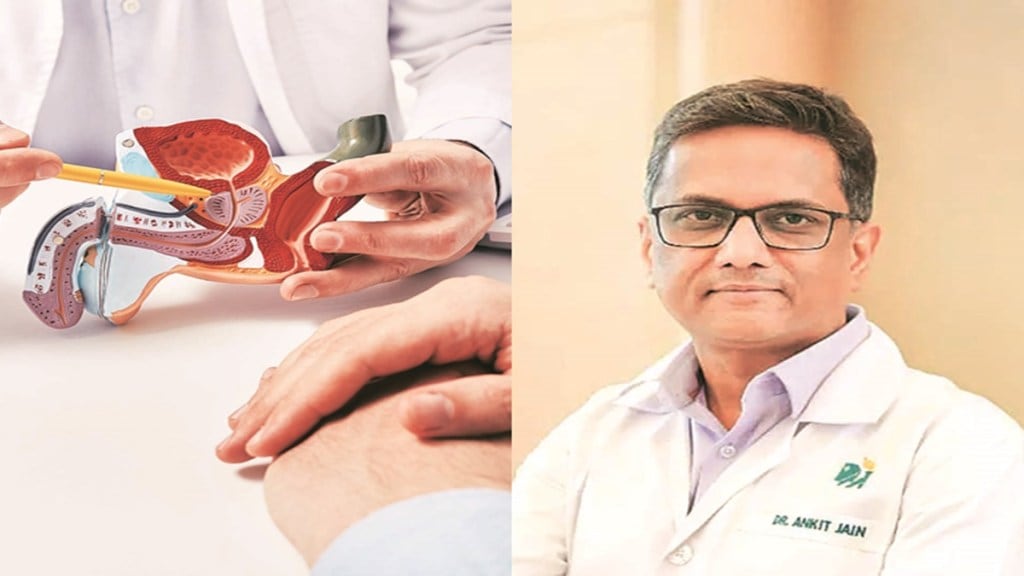Former US President Joe Biden’s prostate cancer diagnosis comes as a wake-up call for many men to get tested. Dr Ankit Jain, senior consultant, medical oncology, Indraprastha Apollo Hospitals, says that prostate cancer is among the top ten cancers affecting Indian men, with its incidence steadily rising, especially in urban areas. According to the National Cancer Registry Programme, prostate cancer ranks second or third in cancer incidence among males in metropolitan cities like Delhi, Bengaluru, and Mumbai.
The age-adjusted incidence rate is approximately 10-11 per 100,000 men, although it may be under-reported due to lack of widespread screening and awareness. In rural areas, detection is even lower due to limited access to healthcare. However, with the increasing life expectancy, urbanisation, and lifestyle changes, the numbers are expected to rise significantly. While it is still less common compared to Western countries, delayed diagnosis is a serious issue in India, leading to more advanced stages at presentation. Early detection programmes and awareness campaigns remain key to addressing the growing burden.
Which age group is most susceptible?
Prostate cancer predominantly affects older men, with the risk increasing substantially after the age of 50. In India, the most susceptible age group falls between 60 and 74 years. This aligns with global data showing that nearly 60% of prostate cancer cases occur in men over 65. The cancer is rare in men under 50, but family history and genetic predispositions can cause earlier onset in some cases. Aging plays a critical role due to prolonged exposure to testosterone and the natural wear and tear of cellular mechanisms. As India’s population ages, the number of cases is expected to grow. Men in this age group are encouraged to undergo regular prostate-specific antigen (PSA) tests and digital rectal exams.
What are the usual signs?
Prostate cancer in its early stages often has no noticeable symptoms, which makes routine screening essential for early detection. When symptoms do appear, they typically involve urinary issues such as increased frequency (especially at night), difficulty starting or stopping urination, weak urine flow, or a feeling of incomplete bladder emptying. Some men may experience pain or burning during urination or ejaculation. In more advanced cases, there may be blood in the urine or semen, pain in the lower back, hips, or pelvis, and even signs of bone metastasis like persistent bone pain. Because these symptoms can mimic benign prostatic hyperplasia (BPH) or urinary tract infections, they are often overlooked or misattributed. Any persistent or worsening urinary symptoms in men over 50 should prompt a consultation with a urologist.
Can it be prevented through lifestyle factors?
While prostate cancer cannot be completely prevented, certain lifestyle choices can significantly reduce the risk or delay its onset. Diet plays a crucial role — low consumption of red and processed meats and high intake of fruits, vegetables (especially tomatoes rich in lycopene), and omega-3 fatty acids may help reduce risk. Maintaining a healthy weight and engaging in regular physical activity have also been linked to lower risk. Smoking cessation and limiting alcohol consumption are further protective measures. Some studies suggest that chronic inflammation, insulin resistance, and hormonal imbalances could increase prostate cancer risk, all of which can be moderated by a healthy lifestyle. Additionally, men with a family history of prostate cancer or BRCA1/BRCA2 gene mutations should consider early screening.
What are the treatment options?
Treatment for prostate cancer depends on the stage of the disease, the patient’s age, overall health, and personal preferences. For localised, slow-growing tumours, ‘active surveillance’ is often recommended, especially in older patients, to avoid overtreatment. In more aggressive or advanced cases, treatments include surgery (radical prostatectomy), radiation therapy, and hormone therapy. Chemotherapy is typically reserved for cancer that has spread beyond the prostate or that doesn’t respond to hormone therapy. Newer options include immunotherapy and targeted therapy, especially for patients with genetic mutations. Minimally invasive procedures like robotic-assisted surgeries and stereotactic body radiotherapy (SBRT) are also gaining popularity in India. With timely and appropriate treatment, the survival rate for localised prostate cancer is very high, often exceeding 90%. However, access to care and affordability continue to pose challenges.









